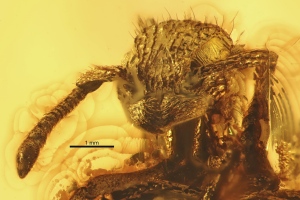Researchers are about to take a big step toward better understanding a tiny air pollutant. A U.N. expert panel earlier this month agreed on a technical road map that will guide the first multinational effort to create a standardized emissions inventory of black carbon, a kind of microscopic soot particle. Scientists say that black carbon emissions play an important but poorly understood role in both global climate change and air pollution. Continue reading New Agreement Casts Spotlight on Efforts to Inventory Black Carbon
Category Archives: News
Spain replants after centuries of deforestation
First broadcast and published by Deutsche Welle: [html] [mp3]
Around this time of year in the Sierra de Guadarrama, a snow-capped mountain range outside Madrid, the snow is starting to melt. Below the tree line, the melting water soaks the earth in dense stands of pine trees. Further down, holly, oak and ash trees line the banks of mountain streams, and goats graze between granite rock formations.
Continue reading Spain replants after centuries of deforestation
Cheap Magnetic Helmet Detects Some Kinds of Brain Damage
 A helmet that sends a magnetic field through the wearer’s head might someday offer a quick way to reveal whether the brain is swelling or bleeding as the result of an injury.
A helmet that sends a magnetic field through the wearer’s head might someday offer a quick way to reveal whether the brain is swelling or bleeding as the result of an injury.
In a prototype of the helmet, a small halo-like coil generates a magnetic field above a person’s head; another coil, just above the ears, detects the magnetic field induced in the volunteer’s brain. Because liquid such as blood affects the magnetic field’s phase, the team behind the device was able to distinguish eight brain-injured patients from 46 healthy volunteers in a pilot study, they report in the journal PLOS One. Continue reading Cheap Magnetic Helmet Detects Some Kinds of Brain Damage
Why the Tropics are an evolutionary hotbed
Tropical climates are famously rich in biodiversity, perhaps because old lineages persist well in those regions instead of being simply replaced by new ones, or perhaps because the tropical environment promotes fast speciation. A new study of the ant family tree suggests that both these explanations may be right.

